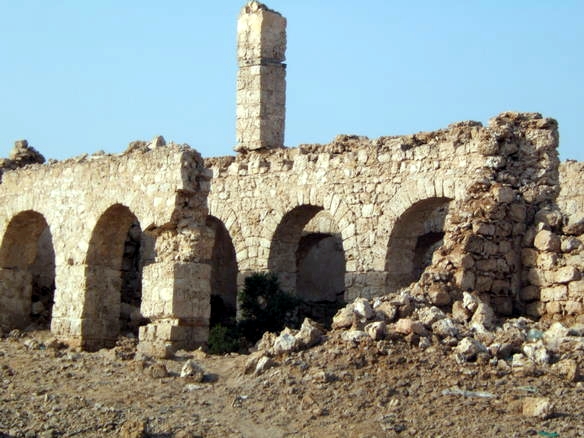|
Mahfuz Nedahi
Mahfuz (or Mohammed) ( Harari: መሕፉዝ, ar, محفوظ; died July 1517) was a Harari Garad, Emir of Harar and Governor of Zeila in the Adal Sultanate. Life and reign Mahfuz led raids into the provinces of Abyssinia for a number of years. He selected the season of Lent for his attacks, when the defenders were weakened by their fasts. He invaded the Amhara, Shewa, and Fatagar provinces south of the Awash River. According to Portuguese explorer Francisco Álvares, Mahfuz exclusively targeted Abyssinian soldiers capturing them however left civilians unharmed. Sources differ over the number of years Mahfuz raided Abyssinia. Francisco Álvares states that his raids began during the reign of Eskender, and lasted 25 years. However, Beckingham and Huntingford note that the Ethiopian ''Paris Chronicle'', which draws on contemporary Ethiopian records, dates the beginning of these raids to the ascension of Dawit II (Lebna Dengel) in 1508. Mahfuz is reported to have caused the deaths ... [...More Info...] [...Related Items...] OR: [Wikipedia] [Google] [Baidu] |
Imam
Imam (; ar, إمام '; plural: ') is an Islamic leadership position. For Sunni Muslims, Imam is most commonly used as the title of a worship leader of a mosque. In this context, imams may lead Islamic worship services, lead prayers, serve as community leaders, and provide religious guidance. Thus for Sunnis, anyone can study the basic Islamic sciences and become an Imam. For most Shia Muslims, the Imams are absolute infallible leaders of the Islamic community after the Prophet. Shias consider the term to be only applicable to the members and descendents of the '' Ahl al-Bayt'', the family of the Islamic prophet Muhammad. In Twelver Shiasm there are 14 infallibles, 12 of which are Imams, the final being Imam Mahdi who will return at the end of times. The title was also used by the Zaidi Shia Imams of Yemen, who eventually founded the Mutawakkilite Kingdom of Yemen (1918–1970). Sunni imams Sunni Islam does not have imams in the same sense as the Shi'a, an importan ... [...More Info...] [...Related Items...] OR: [Wikipedia] [Google] [Baidu] |
Awash River
The Awash (sometimes spelled Awaash; Oromo: ''Awaash'', Amharic: አዋሽ, Afar: ''We'ayot'', Somali: ''Webiga Dir'') is a major river of Ethiopia. Its course is entirely contained within the boundaries of Ethiopia and empties into a chain of interconnected lakes that begin with Lake Gargori and end with Lake Abbe (or Abhe Bad) on the border with Djibouti, some 100 kilometres (60 or 70 miles) from the head of the Gulf of Tadjoura. It is the principal stream of an endorheic drainage basin covering parts of the Amhara, Oromia and Somali Regions, as well as the southern half of the Afar Region. The Awash Valley (and especially the Middle Awash) is internationally famous for its high density of hominin fossils, offering unparalleled insight into the early evolution of humans. "Lucy", one of the most famous early hominin fossils, was discovered in the lower Awash Valley. For its paleontological and anthropological importance, the lower valley of the Awash was inscribed on the UN ... [...More Info...] [...Related Items...] OR: [Wikipedia] [Google] [Baidu] |
Military Personnel Killed In Action
A military, also known collectively as armed forces, is a heavily armed, highly organized force primarily intended for warfare. It is typically authorized and maintained by a sovereign state, with its members identifiable by their distinct military uniform. It may consist of one or more military branches such as an army, navy, air force, space force, marines, or coast guard. The main task of the military is usually defined as defence of the state and its interests against external armed threats. In broad usage, the terms ''armed forces'' and ''military'' are often treated as synonymous, although in technical usage a distinction is sometimes made in which a country's armed forces may include both its military and other paramilitary forces. There are various forms of irregular military forces, not belonging to a recognized state; though they share many attributes with regular military forces, they are less often referred to as simply ''military''. A nation's military may ... [...More Info...] [...Related Items...] OR: [Wikipedia] [Google] [Baidu] |
1517 Deaths
Year 1517 ( MDXVII) was a common year starting on Thursday (link will display the full calendar) of the Julian calendar. Events January–June * January 22 – Battle of Ridaniya: The Holy Ottoman army of the sultan Selim I defeat the Mamluk army in Egypt, under Tuman bay II. * February 3 – Cairo is captured by the Ottoman Empire, and the Mamluk Sultanate falls. * March 16 – The Fifth Council of the Lateran ends. * May 1 – Evil May Day: Xenophobic riots break out in London. July–December * August 15 – Portuguese merchant Fernão Pires de Andrade meets Ming Dynasty Chinese officials through an interpreter, at the Pearl River estuary and lands, at what is now in the jurisdiction of Hong Kong. Although the first European trade expeditions to China took place in 1513 and 1516 by Jorge Álvares and Rafael Perestrello, respectively, Andrade's mission is the first official diplomatic mission of a European power to China, commissioned b ... [...More Info...] [...Related Items...] OR: [Wikipedia] [Google] [Baidu] |
Ahmad Ibn Ibrahim Al-Ghazi
Ahmad ibn Ibrahim al-Ghazi ( so, Axmed Ibraahim al-Qaasi or Axmed Gurey, Harari: አሕመድ ኢብራሂም አል-ጋዚ, ar, أحمد بن إبراهيم الغازي ; 1506 – 21 February 1543) was an imam and general of the Adal Sultanate. Imam Ahmad (commonly named Ahmed ''Gurey'' ''in Somali, and ''Gura'' in Afar, both meaning "the left-handed" or "the southpaw")'', invaded the Ethiopian Empire under the Sultanate of Adal during the Ethiopian-Adal War. Ethnicity Imam Ahmad is regarded by most scholars as an ethnic Somali. However, a few historians have dismissed the Somali theory. Merid Wolde Aregay argued Ahmed ibn Ibrahim al-Ghazi belonged to the Harla dynasty of rulers through his father. Mohammed Hassan also states Ahmed was the son of Garad Ibrahim, a provincial governor of Sim in Harla realm. According to Taddesse Tamrat, although various Somali clans were involved in the conquest, Ahmed was not a Somali and had links to the Semitic-speaking Wâlasma aristoc ... [...More Info...] [...Related Items...] OR: [Wikipedia] [Google] [Baidu] |
Ahmed Ibn Ibrahim Al-Ghazi
Ahmad ibn Ibrahim al-Ghazi ( so, Axmed Ibraahim al-Qaasi or Axmed Gurey, Harari: አሕመድ ኢብራሂም አል-ጋዚ, ar, أحمد بن إبراهيم الغازي ; 1506 – 21 February 1543) was an imam and general of the Adal Sultanate. Imam Ahmad (commonly named Ahmed ''Gurey'' ''in Somali, and ''Gura'' in Afar, both meaning "the left-handed" or "the southpaw")'', invaded the Ethiopian Empire under the Sultanate of Adal during the Ethiopian-Adal War. Ethnicity Imam Ahmad is regarded by most scholars as an ethnic Somali. However, a few historians have dismissed the Somali theory. Merid Wolde Aregay argued Ahmed ibn Ibrahim al-Ghazi belonged to the Harla dynasty of rulers through his father. Mohammed Hassan also states Ahmed was the son of Garad Ibrahim, a provincial governor of Sim in Harla realm. According to Taddesse Tamrat, although various Somali clans were involved in the conquest, Ahmed was not a Somali and had links to the Semitic-speaking Wâlasma aristocr ... [...More Info...] [...Related Items...] OR: [Wikipedia] [Google] [Baidu] |
Adal (historical Region)
Adal ( Harari: አዳል), known as Awdal or Aw Abdal was a historical Muslim region in the Horn of Africa. Located towards the Harar plateau east of Ifat. Geography Adal was situated east of the province of Ifat and was a general term for a region inhabited by Muslims. According to Portuguese explorer Francisco Alvarez, Adal in 1520 bordered on the Abyssinian frontier province of Fatagar in the west and stretched to Cape Guardafui in the east. He further stated that it was confined by the kingdom of Afar in the north west and that the leaders of Adal were considered saints by the locals for their warfare with neighboring Abyssinia. It was used ambiguously in the medieval era to indicate the Muslim inhabitant low land portion east of the Ethiopian Empire. Including north of the Awash River towards Lake Abbe in modern Ethiopia Djibouti border as well as the territory between Shewa and Zeila on the coast of Somaliland. Districts within Adal included Hubat, Gidaya and Hargaya. ... [...More Info...] [...Related Items...] OR: [Wikipedia] [Google] [Baidu] |
Na'od
Na'od ( gez, ናዖድ) was Emperor of Ethiopia from 1494 to 31 July 1508, and a member of the Solomonic dynasty. His reign was marked by internal tension between territories with the assistance of Queen Eleni. He began construct an extravagant church in Amhara province, called Mekane Selassie. The church was completed by his successor Dawit II in 1530. Reign Na'od was the second son of Baeda Maryam I and his second wife Kalyupe (also called "Calliope"), and was born at Gabarge. Like Eskender before him, he relied on the counsel of the Queen Mother Eleni. Despite her help, his reign was marked by internal dissension. Na'od was very talented in Amharic and Ge'ez poetry. He was also a notable author who wrote a number of religious books. Na'od began construction on a lavish church in the Amhara province, which was decorated with gold leaf and known as Mekane Selassie. However, he died before it was completed, and he was buried in a tomb inside the church. His son Emperor Lebn ... [...More Info...] [...Related Items...] OR: [Wikipedia] [Google] [Baidu] |
Dawit II
Dawit II ( gez, ዳዊት; – 2 September 1540), also known by the macaronic name Wanag Segad (ወናግ ሰገድ, ''to whom the lions bow''), better known by his birth name Lebna Dengel ( am, ልብነ ድንግል, ''essence of the virgin''), was Emperor of Ethiopia from 1508 to 1540, whose political center and palace was in Shewa. A male line descendant of the medieval Amhara kings, and thus a member of the House of Solomon, he was the son of Emperor Na'od and Empress Na'od Mogesa. The important victory over the Adal's Emir Mahfuz may have given Dawit the appellation "Wanag Segad," which is a combination of Geʽez and the Harari terms. Biography Early reign In contrast to previous emperors, Dawit had only one wife, Seble Wongel, whom he married around 1512–13. The couple had eight children: four sons and four daughters. Taking only one wife throughout his life was seen as a Christian act that fit with the ideals of the Church. Although she was well into he ... [...More Info...] [...Related Items...] OR: [Wikipedia] [Google] [Baidu] |
Hakluyt Society
The Hakluyt Society is a text publication society, founded in 1846 and based in London, England, which publishes scholarly editions of primary records of historic voyages, travels and other geographical material. In addition to its publishing role, the Society organises and participates in meetings, symposia and conferences relating to the history of geographical exploration and cultural encounter. It is a registered charity and a non-profitmaking institution administered by a voluntary team of council members and officers. Membership is open to all with an interest in its aims. The Society is named after Richard Hakluyt (1552–1616), a collector and editor of narratives of voyages and travels and other documents relating to English interests overseas. Foundation The Society was created at a meeting convened in the London Library, St James's Square, on 15 December 1846. Under the chairmanship of the geologist Sir Roderick Murchison, it established an eight-man steering group ... [...More Info...] [...Related Items...] OR: [Wikipedia] [Google] [Baidu] |







